Comments / Questions (16)
![]() Elisabeth Meckel wrote:
Elisabeth Meckel wrote:
Bei der Anleitung fehlt die Beschreibung für den Schnabel!!!
16.06.2020 - 07:16DROPS Design answered:
Liebe Frau Meckel, die Anleitung für den Schnabel finden Sie unter Kopf:. Viel Spaß beim häkeln!
16.06.2020 - 09:17
![]() Kaarina wrote:
Kaarina wrote:
Hej.Jag undrar var dutt och spiral ska sitta?:Mvh.Kaarina
10.11.2017 - 12:06DROPS Design answered:
Hej Kaarina, det ser ut som att det hör till några av de andra leksakerna :) Se de andra leksakerna här
13.11.2017 - 14:42
![]() Kaarina wrote:
Kaarina wrote:
Längst ner på klänningens kant hur göra den kanten.
08.11.2017 - 10:30DROPS Design answered:
Hei Kaarina. Her ser det ut som om den svenske oversettelsen på PICOT kanten er utblitt. Den skal vi få oversatt så fort som mulig. Takk for at du gjorde oss oppmerksom på dette. I mellomtiden kan du evnt lese den norske: PICOTKANT: Nederst på kjolen hekles det en picotkant: 1 fm, * 3 lm, 1 st i den 1.lm, hopp over ca 1 cm, 1 fm i neste m *, gjenta fra *-* og avslutt med 1 kjm i fm på beg av omg. God Fornøyelse.
08.11.2017 - 11:23
![]() Motillon wrote:
Motillon wrote:
Pouvez-vous me transmettre les explications du bec. Merci
01.12.2013 - 17:29DROPS Design answered:
Bonjour Mme Motillon, les explications du bec se trouvent sous la tête, au début du modèle : on crochète comme pour la petite balle mais jusqu'à ce qu'il reste 12 ms, on continue ensuite en jaune pour le bec et on fait 7 tours de ms. Après rembourrage, on ferme le bec par une couture. Bon crochet!
01.12.2013 - 21:05
![]() Ducastel wrote:
Ducastel wrote:
De beschrijving van de onderkant jurk staat er 2x in, maar de beschrijving van de poten niet! kunt ge mij de beschrijving van de poten bezorgen aub?
06.05.2013 - 16:57DROPS Design answered:
Ja, dat is fout. Ik heb de beschrijving van de poten nu toegevoegd in het patroon.
07.05.2013 - 09:04Rina wrote:
Je crois qu'il y a une petite erreur dans la petite balle...car au rang 6 je finis avec 30 ms et au rang 16 on commence les diminutions avec 42 ms pour nous donner un total de 36 ms....merci de m'aider et me dire si la tête est aussi grosse que le corps...
22.04.2013 - 04:28DROPS Design answered:
Bonjour Rina, les explications du canard ont été retranscrites car elles contenaient quelques erreurs. La petite balle (la tête) est plus petite que le corps. Bon crochet !
22.04.2013 - 09:55
![]() Drops Design NL wrote:
Drops Design NL wrote:
U haakt voor de snavel verder in de rondte met oranje en zo 7 toeren haken. Nu via de snavel de kop en snavel opvullen met wat vulling. Dan de steken 2 aan 2 samen haken en dichtnaaien. gr. Angelique
24.08.2011 - 20:06
![]() Ineke wrote:
Ineke wrote:
Ik snap de beschrijving van de snavel niet
23.08.2011 - 14:03
![]() DROPS Design NL wrote:
DROPS Design NL wrote:
Stk = stokje. Je kan eigenlijk een picot maken met zowel een vaste als een stokje. Ik had een vaste voorgesteld, maar volgens Design moet het een stokje zijn. Gr. Tine
27.02.2009 - 15:03
![]() Jacqueline Kattenberg-Gronloh wrote:
Jacqueline Kattenberg-Gronloh wrote:
Ik ben pas begonnen met haken en begrijp het nog niet helemaal, sorry. Moet ik voor dat picotrandje nu een stokje of een vaste in de 1e losse haken? Ofwel: staat de afkorting stk voor stokje of steek? Verder natuurlijk mijn dank voor de hulp en de aanpassing. De (proef-)kip is erg leuk geworden!
27.02.2009 - 13:27
Mama Duck |
|
 |
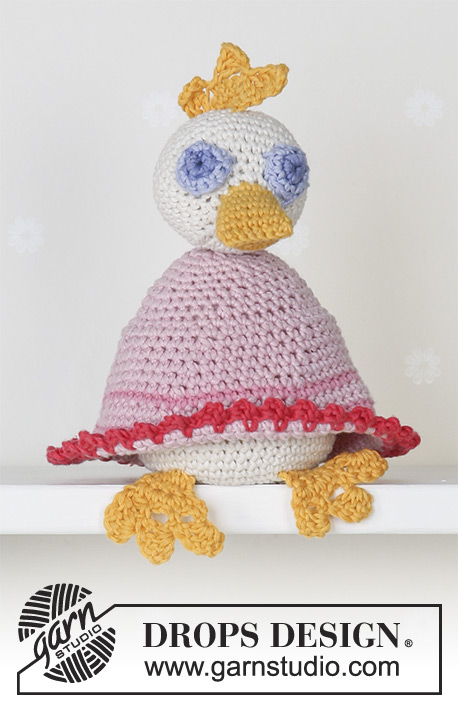 |
Crochet duck toy in DROPS Safran or DROPS Muskat
DROPS Baby 13-29 |
|
|
Crochet the duck with Safran, one color for the body, stripes for the dress and the feet, beak and cock’s comb in orange. Body: Crochet as middle size ball from round 1 – 13, hereafter crochet sc in each sc for another 8 rounds = 42 sc. Put the piece aside. Dress: Ch 68 and make a ring with a sl st. Crochet 4 rounds with sc in each ch, hereafter crochet 1 round, at the same time dec 6 sc evenly distributed on round (this means crochet approx each 10th and 11th sc tog. – see explanation above. *Crochet 1 round of 1 sc in each sc, hereafter a round dec. 5 sc evenly distributed on round*, repeat from *-* a total of 4 times = 13 rounds in total and 42 sc on round. Put the body inside the dress and crochet the 2 parts tog. with sc in the color of the dress. Crochet 1 round of sc in each sc. Continue to crochet the last 6 rounds of the middle size ball. Head: Crochet the head as a small ball until 12 sc left. Now crochet 7 rounds of sc for the beak. Fill the beak and the head with poly stuffing. Crochet the beak tog. at the front. Sew the head to the body. Cock’s comb and feet: Crochet 3 feet and sew 2 of them underneath the biggest ball and 1 at the top of the head for cock’s comb. Eyes: Crochet 4 eyes according to the knob description, but crochet in addition 1 round with 1 sc in each sc = a total of 3 rounds. At the bottom of dress crochet a picot border as follows: 1 sc, * ch 3, 1 dc in the first ch, skip approx 1 cm / ⅜", 1 sc in next st *, repeat from *-* and finish round with 1 sl st in first sc from beg of round. Crochet sc’s tog. as follows: Crochet 2 sc tog. to 1 sc as follows: Push the hook through the 1. sc, pull the thread through, push the hook through the next sc, pull the thread through, yrh and pull the thread through all 3 sts on hook BIG BALL: 1st round: Ch 3 and make a ring with a sl st. 2nd round: Crochet 6 sc around the ring, finish with a sl st in the 1st sc, ch 1. 3rd round: 2 sc in each sc = 12 sc, finish with a sl st in the 1st sc, ch 1. 4th round: *1 sc, 2 sc in the next sc*, repeat from *-* finish with a sl st in the 1st sc, ch 1 = 18 sc. 5th round: *2 sc, 2 sc in the next sc*, repeat from *-* finish with a sl st in the 1st sc, ch 1 = 24 sc. 6th round: *3 sc, 2 sc in the next sc*, repeat from *-* finish with a sl st in the 1st sc, ch 1 = 30 sc. 7th round: *4 sc, 2 sc in the next sc*, repeat from *-* finish with a sl st in the 1st sc, ch 1 = 36 sc. 8th round: *5 sc, 2 sc in the next sc*, repeat from *-* finish with a sl st in the 1st sc, ch 1 = 42 sc. 9th round: *6 sc, 2 sc in the next sc*, repeat from *-* finish with a sl st in the 1st sc, ch 1 = 48 sc. 10th- 24th round: 1 sc in each sc, finish with a sl st in the 1st sc, ch 1 25th round: *6 sc, crochet the 7th and the 8th sc tog. to 1 sc*- see explanation above repeat from *-* finish with a sl st in the 1st sc, ch 1 = 42 sc. 26th round: *5 sc, crochet the 6th and the 7th sc tog. to 1 sc, repeat from *-* finish with a sl st in the 1st sc, ch 1 = 36 sc. 27th round: *4 sc, crochet the 5th and the 6th sc tog. to 1 sc* repeat from *-* finish with a sl st in the 1st sc, ch 1 = 30 sc. 28th round: *3 sc, crochet the 4th and the 5th sc tog. to 1 sc* repeat from *-* finish with a sl st in the 1st sc, ch 1 = 24 sc. 29th round: *2 sc, crochet the 3rd and the 4rd sc tog. to 1 sc* repeat from *-* finish with a sl st in the 1st sc, ch 1 = 18 sc. Now fill the ball with poly stuffing. 30th round: *1 sc, crochet the 2nd and the 3rd sc tog. to 1 sc* repeat from *-* finish with a sl st in the 1st sc, ch 1 = 12 sc. 31th round: Crochet all sc tog. 2 by 2. Cut the thread and sew the hole together. MIDDLE BALL: 1st – 8th round crochet as big ball, hereafter round 10-14 and then round 26-31. SMALL BALL: 1st – 6th round crochet as big ball, hereafter round 10-18 and then round 28-31. FEET: 1st row: Ch 5, turn, skip the 1st ch and crochet 4 sc back, ch 2, turn. 2nd row: 2 sc in each sc, ch 2, turn. 3rd row: Crochet 1 row of sc, ch 2, turn. 4th row: 1 sc, ch 4, 3 dc in the first ch, skip a sc, 1 sc in the next sc, ch 4, 3 dc in the first ch, skip 2 sc, 1 sc in the next sc, ch 4, 3 dc in the first ch, skip 1 sc, 1 sc in the last sc. KNOB: 1st round: Ch 3 and make a ring with a sl st in the first ch.. 2nd round: Crochet 6 sc around the ring, finish with a sl st in the 1st sc. |
|
|
Have you made this or any other of our designs? Tag your pictures in social media with #dropsdesign so we can see them! Do you need help with this pattern?You'll find 9 tutorial videos, a Comments/Questions area and more by visiting the pattern on garnstudio.com. © 1982-2025 DROPS Design A/S. We reserve all rights. This document, including all its sub-sections, has copyrights. Read more about what you can do with our patterns at the bottom of each pattern on our site. Have you finished this pattern? |
|







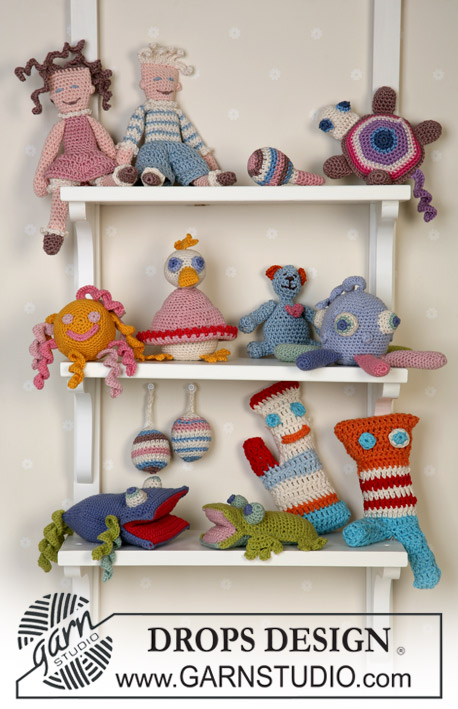

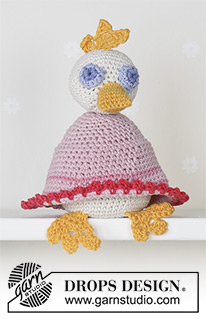
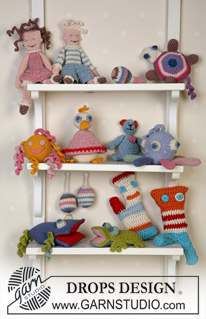





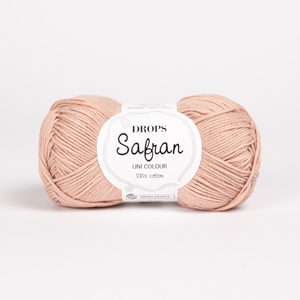
















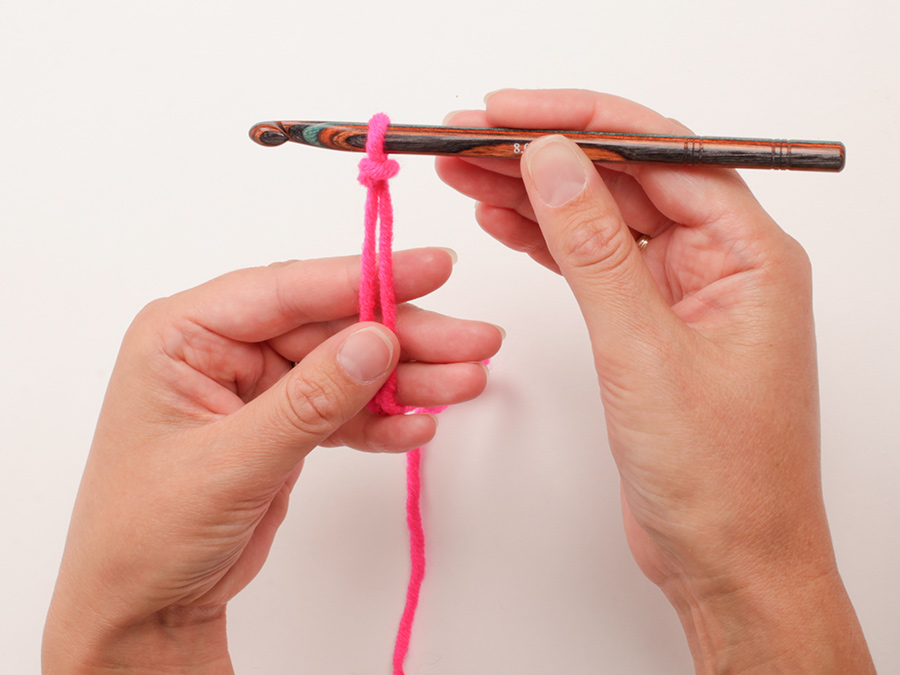
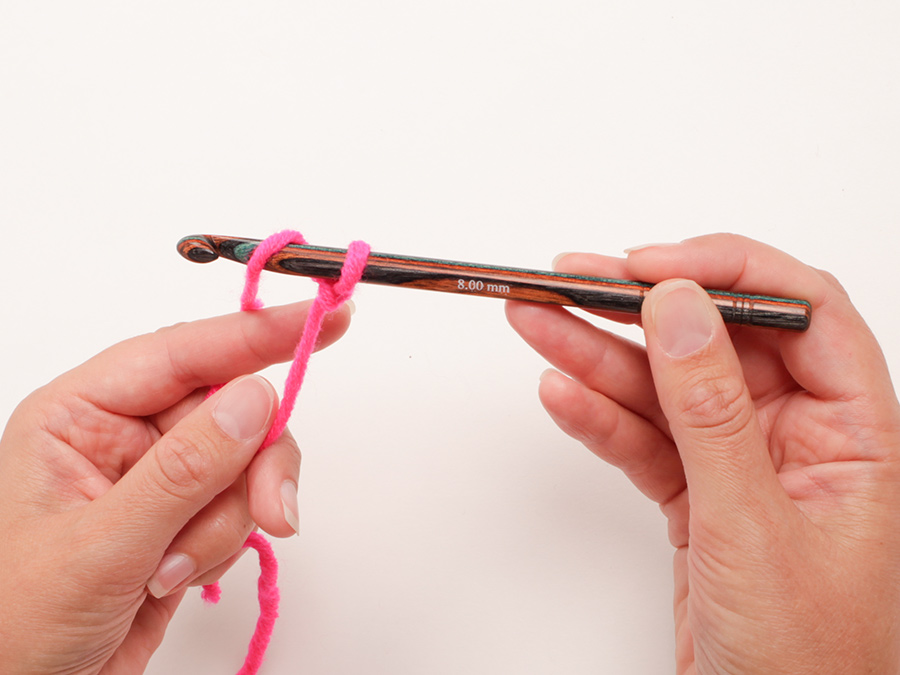
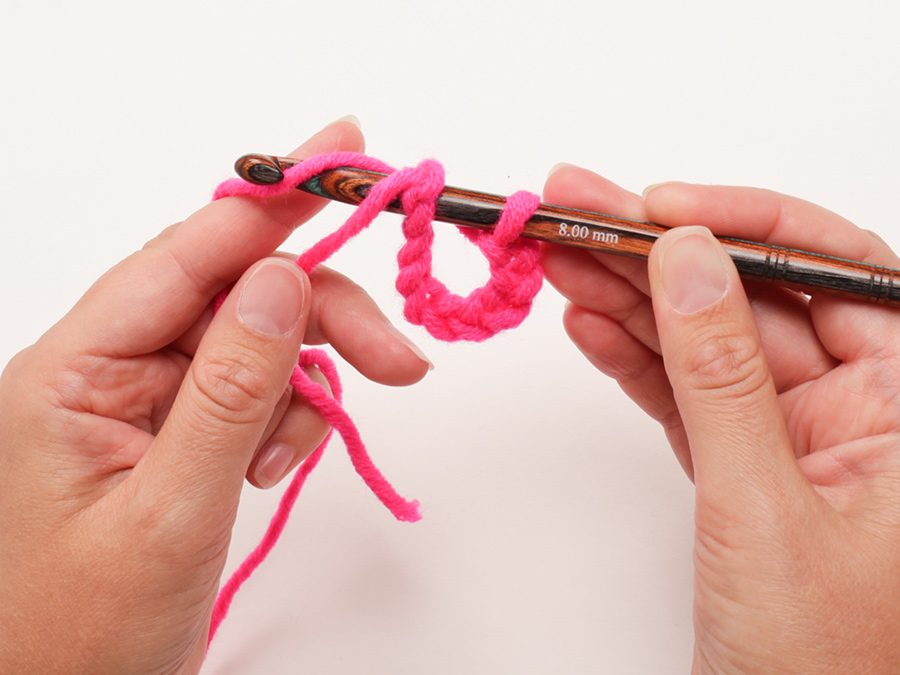
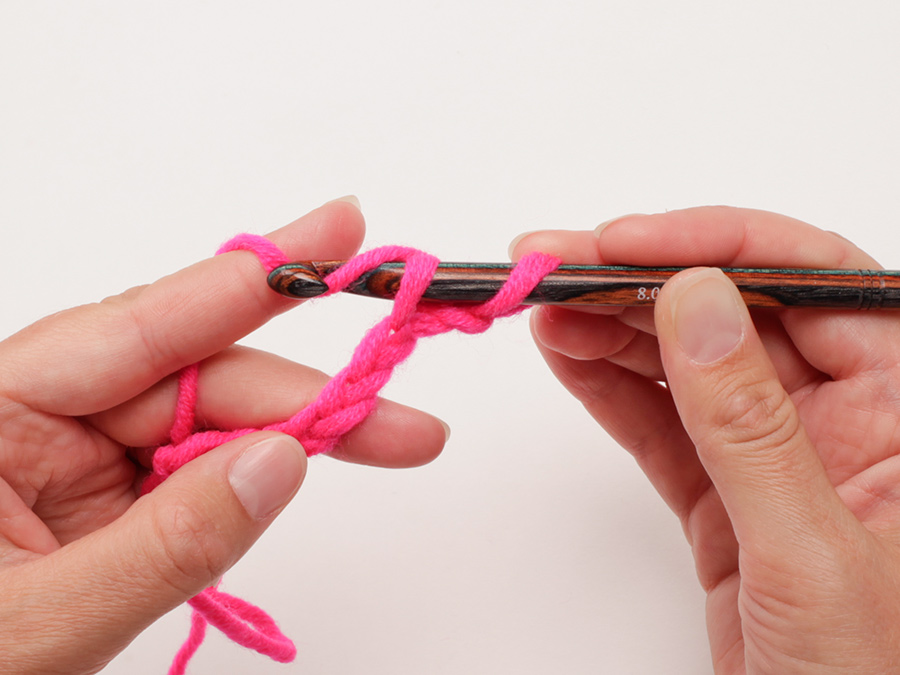
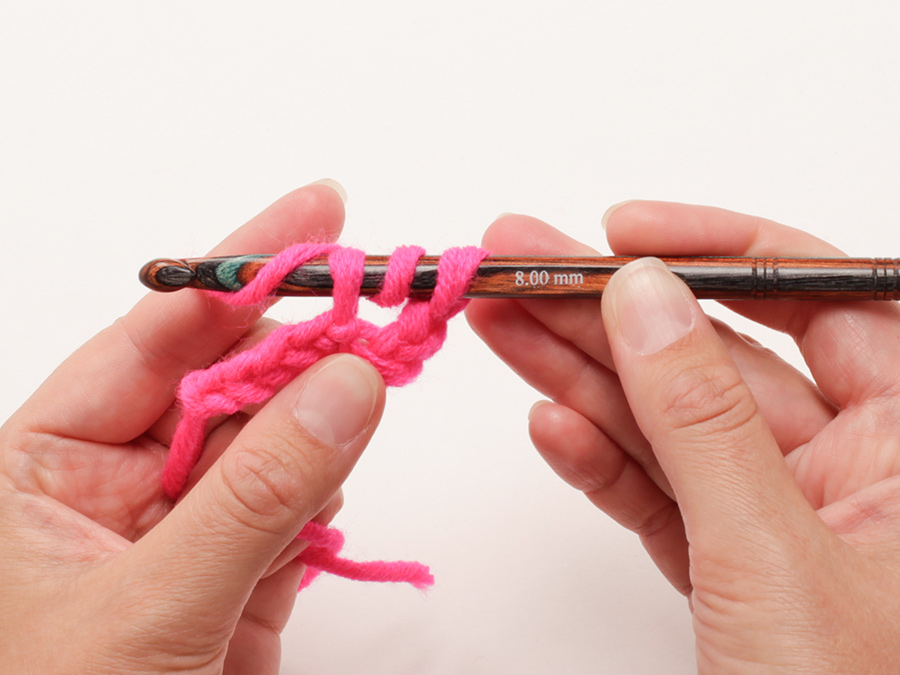
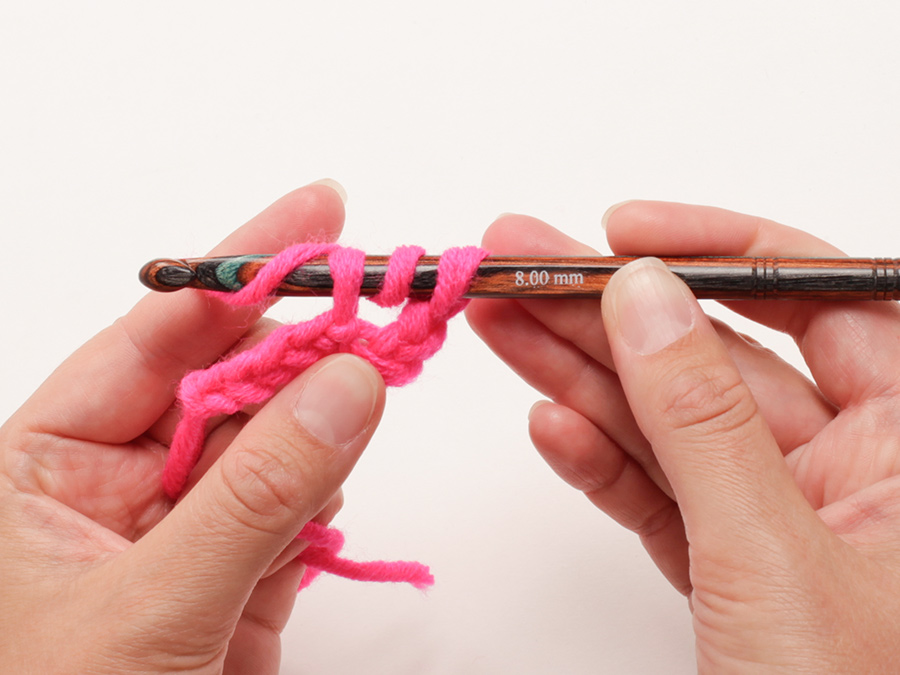






Post a comment to pattern DROPS Baby 13-29
We would love to hear what you have to say about this pattern!
If you want to leave a question, please make sure you select the correct category in the form below, to speed up the answering process. Required fields are marked *.